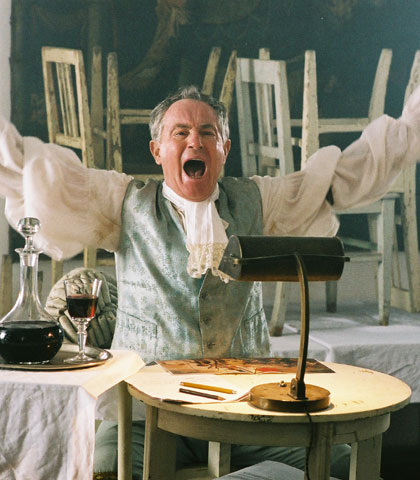
This may be the creepiest movie you've never seen. Made by Hammer Film Productions, it isn't one of their gothic romps. Those pictures are a lot of fun and you can enjoy yourself immensely either pretending to be scared or just wallowing in their nostalgic glow, but this one is a different manner of ick entirely.
Based on a play by Roger Garis called The Pony Cart, and with a screenplay by John Hunter and direction from Cyril Frankel, Never Take Candy From a Stranger (aka Never Takes Sweets From a Stranger), the film is the story of Peter and Sally Carter, with their pre-adolescent daughter Jean (Patrick Allen, Gwen Watford, Janina Faye) who have moved to Canada so Peter can take up the post of headmaster at the local high school.
One night, Jean tells her parents that she and her friend Lucille (Frances Green) had visited the Olderberry mansion because Lucille knew there was an elderly man there who would give them candy. Clarence Olderberry, Sr. (Felix Aylmer) promised to give the girls sweets if they would remove all their clothing and dance for him. The girls do (all this is offscreen) but now Jean is worried because she knows they shouldn't have done it.
When the Carters complain to the police they are told that the Overberry family owns the town and it's best to just forget about the old man's little problem and warn Jean never to visit him again. The Carters want more, for the sake of all the town's children, and force the police to bring Overberry to trial, where the defense counsel (Niall MacGinnis) twists everything Jean says on the stand and makes her look unreliable, at best.
Overberry is acquitted, as the Carters were warned he would be, and before they can move out of town Jean and Lucille go walking in the woods, and guess who they meet? His pursuit of the girls through the woods is chilling, mainly because Alymer, as Overberry, never speaks a word throughout the film. His aging pervert is not so much evil as he is stuck mentally in an evil place. He could easily be in the throes of early dementia. He shakes, he dribbles, he smiles vacantly, and when he sees little girls, he desires one thing only.
If the film were merely the story of a sexual predator on the prowl for children ("merely"?) it could easily be dismissed as exploitation of the worst kind—what a lot of viewers would expect from Hammer. But it's a true horror movie, the horror enhanced by the town's willingness to take chances with the lives of children if it can keep the factory open and the citizens working. This is a plot device that has become familiar in scary movies—think of the mayor insisting on the beaches staying open in Jaws—but, somehow, adults getting eaten by a fish is less upsetting, and a lot more playfully entertaining, than an elderly child abuser terrorizing young girls.

